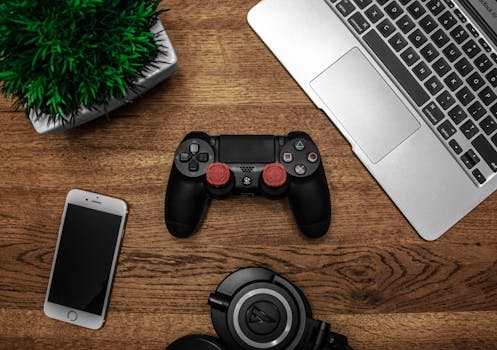How Smart Gadgets are Revolutionizing Sports Training and Improving Performance
In the fast-paced world of sports, athletes and coaches are constantly seeking ways to enhance performance and gain a competitive edge. The advent of smart gadgets has transformed traditional training methods, providing innovative solutions that leverage technology to optimize athletic performance. From wearable devices to smart equipment, these gadgets are not only changing how athletes train but also how they recover and analyze their performance.
The Rise of Wearable Technology
Wearable technology has become a cornerstone of modern sports training. Devices such as smartwatches, fitness trackers, and heart rate monitors allow athletes to collect real-time data on their physical condition and performance metrics. This data-driven approach enables athletes to make informed decisions about their training regimens.
- Heart Rate Monitors: These devices help athletes maintain optimal training zones, ensuring they are not overtraining or undertraining.
- GPS Trackers: Used primarily in sports like running and cycling, GPS trackers provide insights into distance, speed, and route efficiency.
- Smart Clothing: Garments embedded with sensors can monitor muscle activity, body temperature, and even hydration levels.
According to a report by Statista, the global market for wearable fitness technology is expected to reach $62 billion by 2023, highlighting the growing reliance on these devices in sports.
Data Analytics: The New Game Changer
Data analytics has emerged as a powerful tool in sports training. By analyzing data collected from smart gadgets, coaches and athletes can identify patterns and make strategic adjustments to training programs. This analytical approach has been particularly beneficial in team sports.
- Performance Analysis: Coaches can assess player performance through metrics such as speed, agility, and endurance, allowing for tailored training plans.
- Injury Prevention: By monitoring workload and fatigue levels, teams can reduce the risk of injuries, ensuring athletes remain in peak condition.
- Game Strategy: Data analytics can inform game strategies by analyzing opponents’ strengths and weaknesses.
A notable example is the use of analytics in soccer, where teams like FC Barcelona employ data scientists to analyze player movements and optimize formations based on real-time data.
Smart Equipment: Enhancing Training Efficiency
Smart equipment is another area where technology is making significant strides. From smart basketballs that track shooting accuracy to connected tennis rackets that analyze swing patterns, these tools provide immediate feedback to athletes.
- Smart Basketballs: These balls can measure shooting angles, speed, and accuracy, helping players refine their skills.
- Connected Tennis Rackets: These rackets provide insights into swing speed and impact location, allowing players to adjust their technique.
- Smart Gym Equipment: Machines that track reps, sets, and rest periods help athletes optimize their strength training routines.
For instance, the Wilson X Connected Basketball has gained popularity among players for its ability to provide detailed shooting statistics, enabling users to track their progress over time.
Recovery and Rehabilitation: The Role of Smart Gadgets
Recovery is a critical aspect of sports training, and smart gadgets are playing a vital role in this area as well. Devices such as massage guns, smart foam rollers, and recovery wearables help athletes recover faster and more effectively.
- Massage Guns: These devices provide percussive therapy, helping to relieve muscle soreness and improve blood flow.
- Smart Foam Rollers: Equipped with sensors, these rollers can guide users through effective recovery routines based on their specific needs.
- Recovery Wearables: Devices that monitor sleep quality and recovery metrics help athletes understand their readiness for training.
Research published in the Journal of Sports Sciences indicates that athletes who utilize recovery technology experience a 20% reduction in muscle soreness compared to those who do not.
Conclusion: The Future of Sports Training
The integration of smart gadgets into sports training is revolutionizing how athletes prepare for competition. By leveraging wearable technology, data analytics, smart equipment, and recovery tools, athletes can enhance their performance, reduce injury risks, and optimize their training regimens. As technology continues to evolve, the potential for further advancements in sports training is limitless. The future of sports will undoubtedly be shaped by these innovations, making it an exciting time for athletes and coaches alike.
